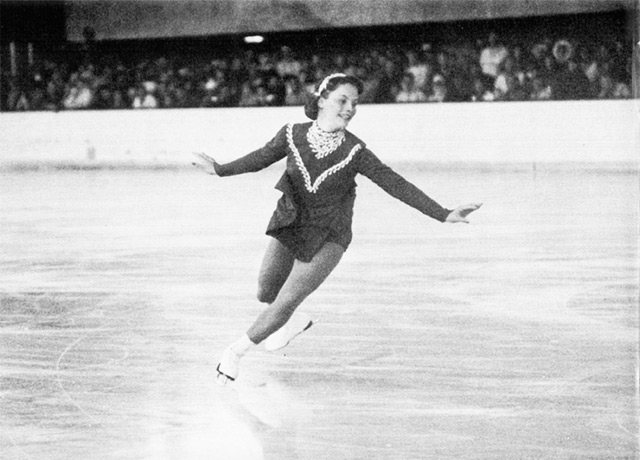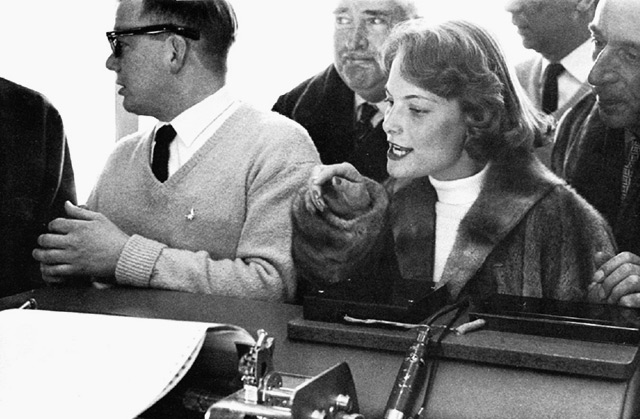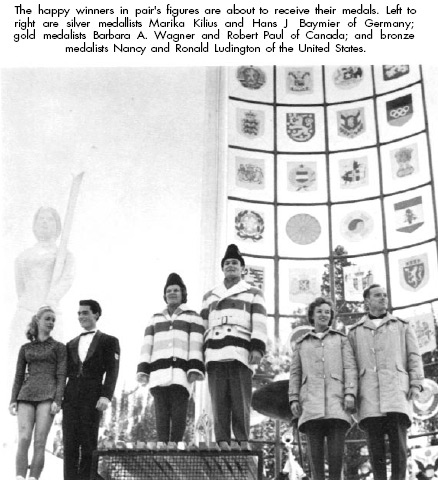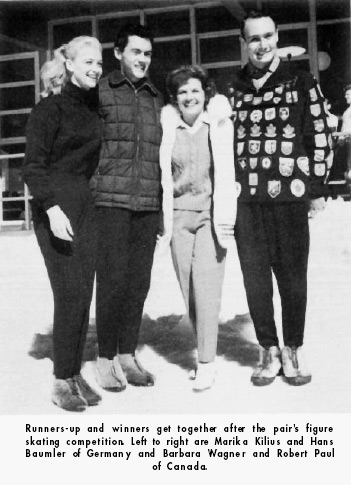
Barbara A. Wagner and Robert Paul
As was the case at Cortina in 1956, American athletes were most prominent in the figure skating competition. Closest rivals to the Americans were representatives from Canada.
On the first day of competition, the Canadian pairs team of Barbara A. Wagner and Robert Paul gave an almost flawless performance to earn a gold medal. Very few Americans had ever seen such stylish skating, and Miss Wagner and Paul were extremely popular winners. Marika Kilius and Hans J. Baumler of Germany placed second in pairs figure skating, and Nancy and Ronald Ludington of the United States captured third place honors and bronze medals.
Ice Queen Carol Heiss

America's first gold medal of the Games was won on February 23, when 20-year-old Carol Heiss, a pert and lovely girl from Ozone, N. Y., thrilled the crowd with a breathtaking set of free figures. Miss Heiss placed second in the 1956 Games at Cortina, but led from beginning to end in the Squaw Valley competition.
Miss Heiss was followed, in order, by Sjoukje Dijkstra of the Netherlands and Barbara Ann Roles of the United States. Since Miss Heiss announced her retirement after the competition, Miss Dijkstra and Miss Roles, both teenagers, figure to battle for top honors at Innsbruck in 1964.
Another American, David W. Jenkins, captured the men's figure skating title, to succeed his brother, Hayes Alan, who won the gold medal at Cortina in 1956. Jenkins trailed in the school figures, but put on a brilliant display in the free figures for a comeback victory. Karol Divin of Czechoslovakia, who led during the school figures, finished second. Donald Jackson of Canada placed third.


